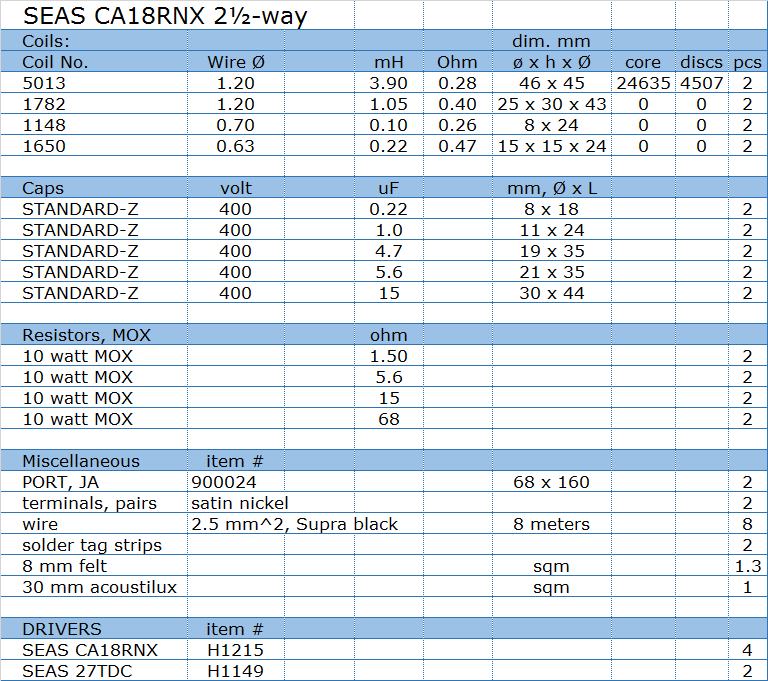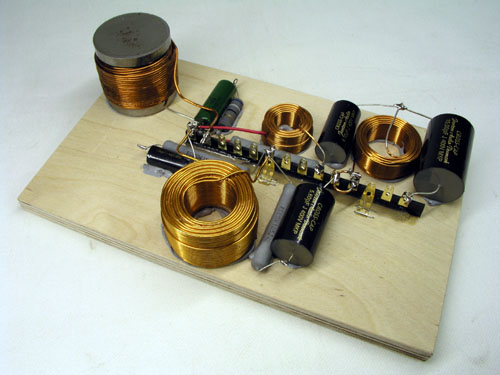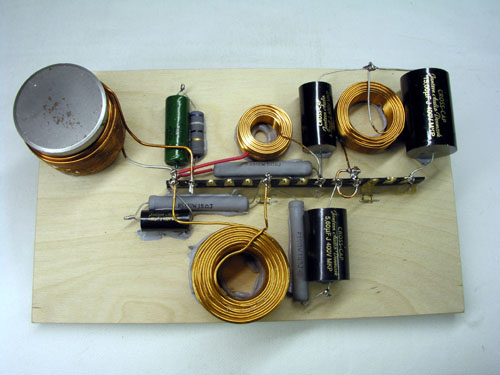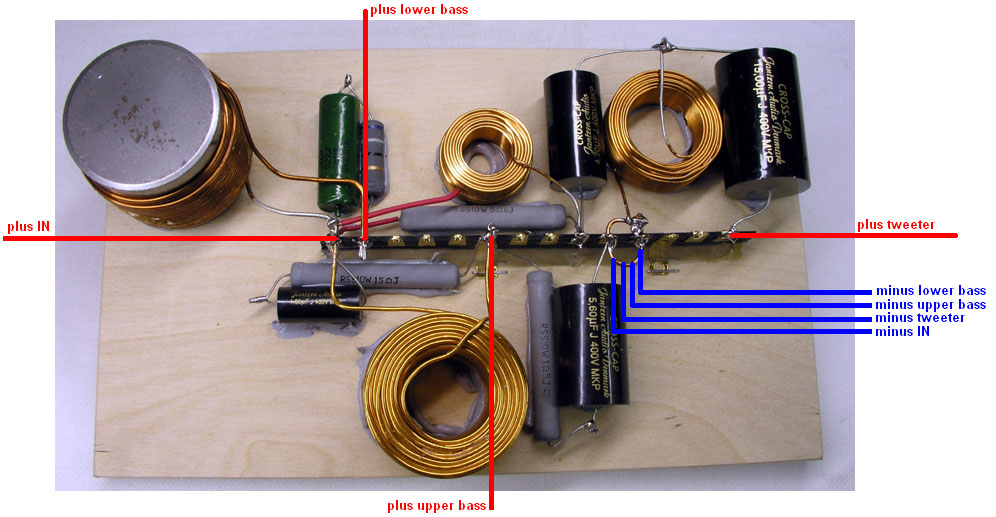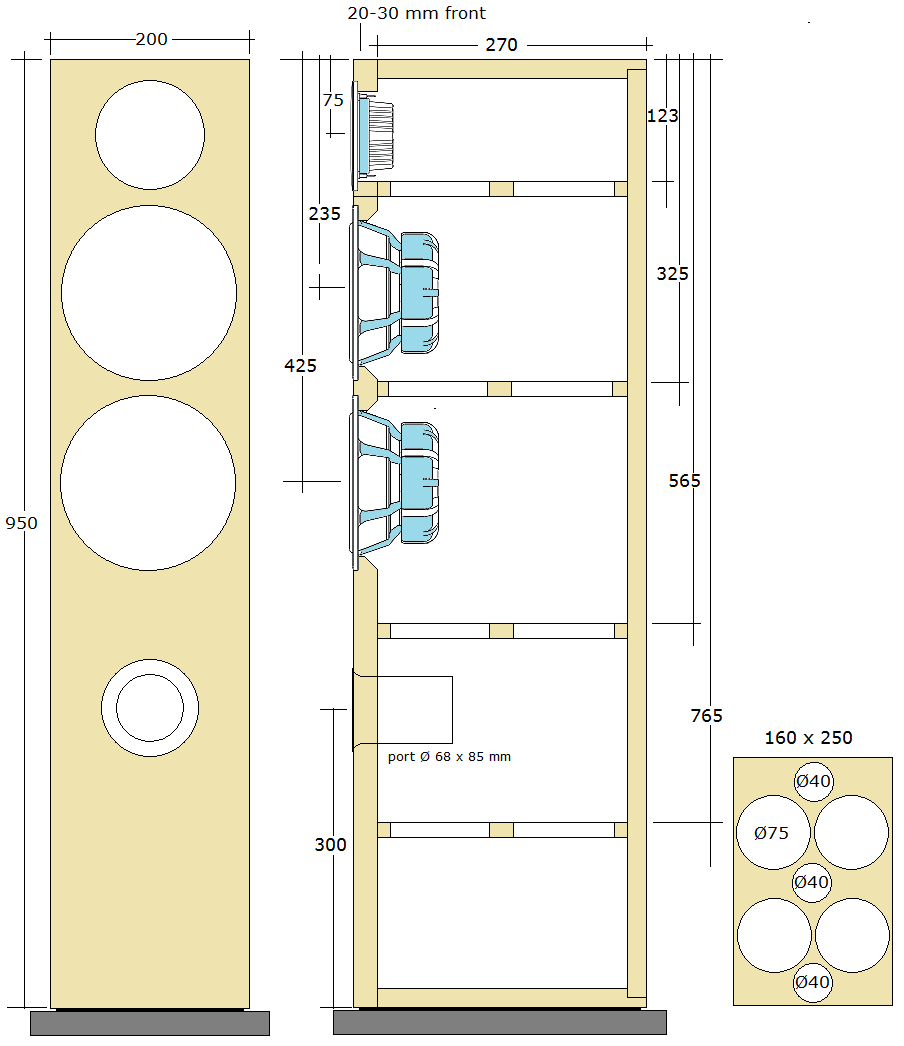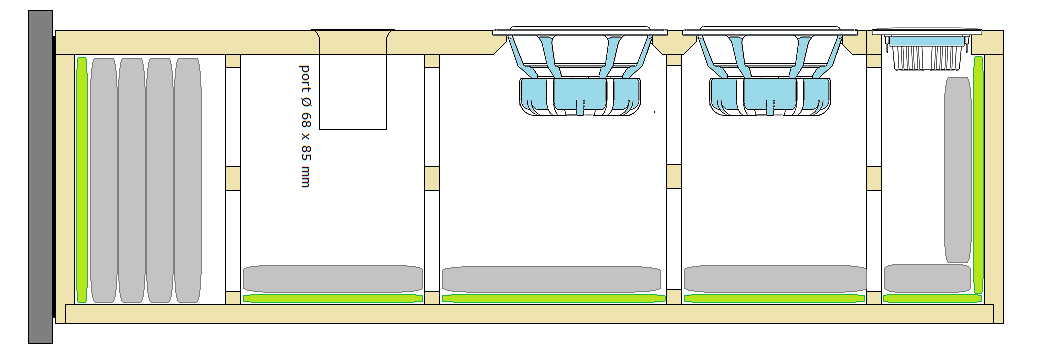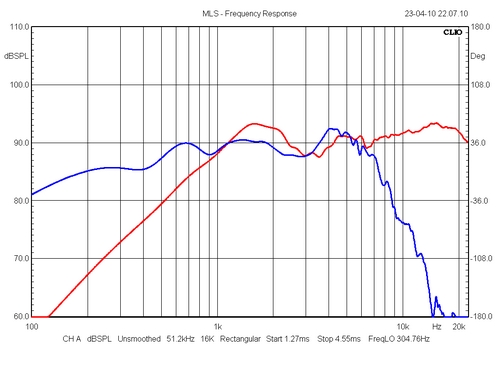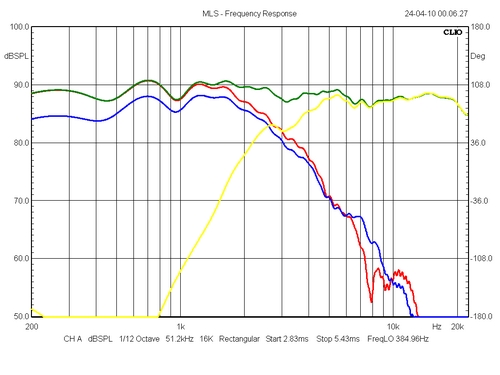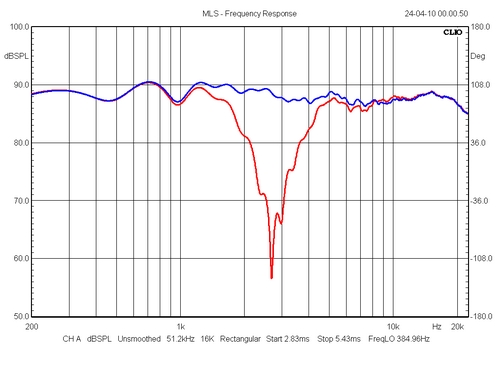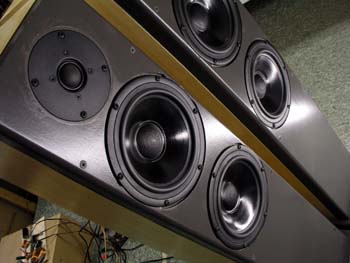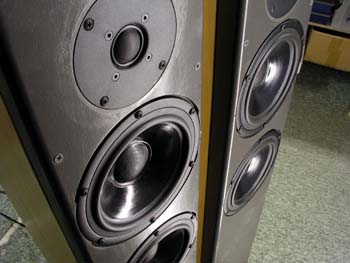SEAS CA18RNX 2½-way floorstander
Open kit, not supported by Jantzen Audio. Go to on this page: CROSSOVER CABINET MEASUREMENTS
Download driver specs:
SEAS
CA18RNX and
SEAS
27TDC. Having recently finished the Peerless NOMEX 164 speaker, the front panel routings would nicely fit with these SEAS drivers, thus another 2½-way system offering an excellent cost-performance ratio. There are good reasons for the popularity of 2½-ways. Most people want a slim cabinet and placing a single e.g. 6" driver on a 20 cm baffle calls for serious baffle step loss, that is: The response from the driver will fade 6 dB/octave downwards from around 580 Hz (11,600/20 = 580 Hz). So, we have to add a rather large coil to the single driver to compensate for this loss and get a flat response in all of the midrange. Adding a second woofer run through a larger coil can fill this gap, thus we achieve an overall flatter response and we get twice the membrane area in the bass section (so much needed) and we get roughly twice the power handling. Last but not least we can increase overall system sensitivity by a factor of two (+ 3 dB). Those familiar with these pages may immediately ask what the price is for this, because there's usually a price to pay for anything we do with loudspeakers. Hmm... You have to pay for an additional two woofers and you have to make your cabinet bigger, i.e. twice the volume of a single driver cab, but you can maintain baffle width and only increase cabinet depth so your wife won't get another heart attack - at least when she sees the speakers from the front. Finally you get half the impedance of a single driver set-up, the latter not a problem for any modern amplifier. These SEAS CA18RNX drivers hold
the classical coated paper cones, but here with a 39 mm
voice coil former allowing greater power handling
compared to CA18RLY's standard 1" voice coil.
Overall frequency response is better for the CA18RLY, but
despite a somewhat whobbly midrange they sound smooth,
detailed and throw a punchy bass. Smoothing the midrange
further took at lot of components and the sound? Not
better, thus this simplistic crossover only smoothing
some peaks in the 8-10 kHz range. Overall system sensitivity is around 89-90 dB/2.8 volts and impedance stay above 4 ohms. No problem for the majority of amplifiers. QUESTIONS having the
answer NO:
Crossover layout
The drawings here are from the CNO-25, as they share the same dimansions.
Cabinet damping
Add 8 mm
felt to all internal panels except front.
|

